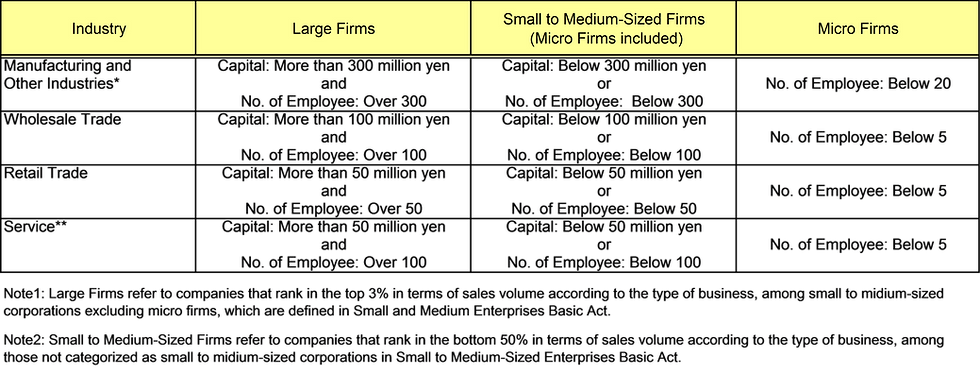TPP11, 51.7% of companies saying "necessary for Japan"
- Teikoku
- Jul 21, 2017
- 3 min read

- Over 40% says US withdrawal from TPP is a 'negative factor' for Japan, high expectation for RCEP -
US President Trump expressed withdrawal from the Trans-Pacific Partnership (TPP) on January 21, 2017 (Japan Time). Under these circumstances, the 11 countries that have signed the TPP (TPP11), excluding the US, pursued early implementation of high-level rules agreed under the TPP at the meetings of ministers held in Chile (in March) and Vietnam (in May), and agreed to complete the review of choices for the future, including a policy to promote US participation, by November. Comprehensive trade rules in TPP are expected to affect not only other trade negotiations the government works on, but also companies that do not do overseas business. Attention has been paid to the direction of TPP11.
Teikoku Databank has conducted a survey of corporate attitudes toward TPP11. This survey was conducted in conjunction with the June 2017 TDB Trends Research. The survey for TPP11 and TPP were conducted in December 2010 and in December 2015, and this is the 3rd survey.
*Survey period: June 19 - June 30, 2017; Companies Surveyed: 23,927; Valid Responses: 10,045 (Response Rate: 42.0%).
*Details of this survey can be found on the dedicated Economic Trend Survey HP. (http://www.tdb-di.com/)
Survey results (Summary)
1. 51.7% of companies say TPP11 is "necessary for Japan." In terms of the industry to which these companies belong, 22.5% of them think it is "necessary." However, both numbers decreased compared to the previous survey (in December 2015) immediately after the outline agreement of TPP. This reveals their stance that they cannot grasp the need of a TPP11 after the US withdrew.
2. With respect to the impact on their own company, those saying "positive impact" (12.8%) exceeded those saying "negative impact" (5.6%), but those saying "no impact" or "do not know" account for approximately 40% each. By industry, "restaurants" ranked top (at 41.9%) for positive impact, and "agriculture, forestry and fisheries" was top (50.9%) for negative impact.
3. Among companies that assume specific details and impacts, "cost reduction of raw materials" ranked top (38.4%) for positive aspects, followed by "export increase," and "increase in sales and profits." "Selling price decline" ranked top (26.9%) for negative aspects.
4. With respect to the impact of US withdrawal from TPP, those saying "positive impact" and "negative impact" in terms of industry to which these companies belong account for 2.7% and 18.1%, respectively. In terms of all Japan, "positive impact" and negative impact" account for 5.0% and 44.4%, respectively.
5. With respect to expected trade negotiations, "Regional Comprehensive Economic Partnership (RCEP)" ranked top at 35.8%, followed by "Free Trade Area of the Asia-Pacific (FTAAP)" (31.4%), and "Economic Partnership Agreement between Japan and EU" (22.3%).
6. With respect to trade negotiations, those saying "should pursue mainly with multilateral negotiations" account for 46.2% for the US, and 47.0% for China.
Appendix
1.Research Subjects(Companies Researched 23,927; Valid responses: 10,045; Response rate: 42.0%)



2.Research Items
*Business Confidence (current, in 3 months, in 6 months, in 1 year)
*Business Conditions (sales, purchasing and selling unit price, inventory, capacity utilization ratio, number of employees, overtime work hours)
3.Research Period and Methodology
Internet-based survey conducted June 19 – 30 2017
The explanation of the Economic Diffusion Index
Research Purpose/Researched Terms
TDB Economic Trend Research (started from May 2002) is a monthly statistical survey conducted for over 20,000 nationwide corporations on their general business activities including the current condition and future outlook of the industry business performance and operating climate. The primary purpose of such a survey is to assess the current state of Japan’s economy.
Selection of the Subject Corporations
Companies of all sizes in all domestic industries are eligible to participate in the survey.
DI Formula
The DI (Diffusion Index) is calculated by attaching a number (in parenthesis in the diagram below) to each of seven possible responses. Then multiplying the percentage of each response by the appropriate number, and adding the results.

A DI over 50 is in the range of “Good.” A score under 50 is “Bad.” The number 50 is the dividing point (“Neither Good or Bad”). All numbers are rounded off to the hundredth. It should be noted that no weight is given to a company’s responses based on its size. Calculations are made according to a “one company, one vote” rule.
.
For example, all corporations rated ‘Very Good’.
DI=6/6x100(%)=100
All corporations rated ‘Neither Good nor Bad’.
DI=3/6x100(%)=50





















